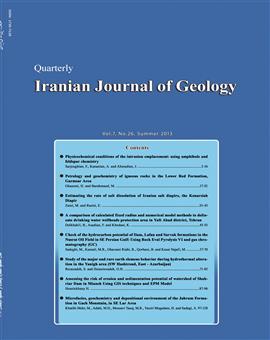-
-
List of Articles
-
Open Access Article
1 - بلثق
-
Open Access Article
2 - یسب
-
Open Access Article
3 - fd
-
Open Access Article
4 - Petrology and geochemistry of igneous rocks in Lower Red Formation, Garmsar Area
Habibollah Ghasemi -
Open Access Article
5 - A comparison of Calculated Fixed Radius and Numerical Model Methods to delineate drinking water wellheads protection area in Yaft Abad district, Tehran
بهزاد دلخواهي -
Open Access Article
6 - Estimating the rate of salt dissolution of Iranian salt diapirs, the Konarsiah Diapir
مهدی زارعی -
Open Access Article
7 - Check of the hydrocarbon potential of Ilam, Lafan and Sarvak formations in The Nusrat Oil Field in SE Persian Gulf: Using Rock Eval Pyrolysis VI and gas chromatography (GC)
Mohammad صادقی -
Open Access Article
8 - Study of the major and rare earth elemens behavior during hydrothermal alteration in the Yanigh area (SW Hashtroud, East -Azarbaijan)
-
Open Access Article
9 - Assessing the risk of erosion and sedimentation potential of watershed of Shahriar Dam in Mianeh Using GIS techniques and EPM Model
mohammad hosein goudarzi -
Open Access Article
10 - Geochemistry, microfacies and depositional environment of Eocene Deposit in Gach Mountain, in SE Lar Area
محمد حسين آدابي
-
The rights to this website are owned by the Raimag Press Management System.
Copyright © 2017-2026







